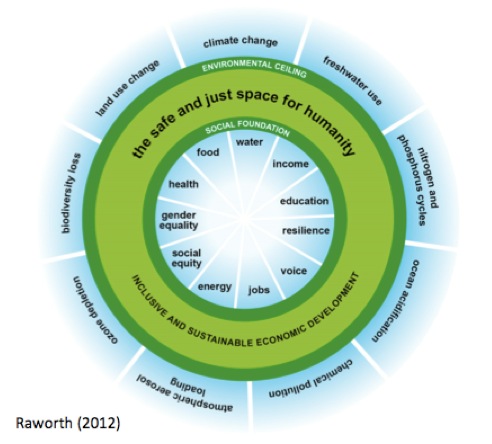Amsterdam’s response to the coronavirus pandemic has been simply extraordinary. It’s decided to officially embrace the so-called “Doughnut Model” of sustainable development.
The framework, created by Oxford University economist Kate Raworth, tries to balance peoples’ needs with environmental awareness.
So, Amsterdam will now be a petri dish of sorts. The Dutch capital is the first city in the world to commit to the doughnut model of development. It will be worth watching how the experiment goes.
How does the Doughnut Model work?
Well, said the deputy mayor, city governance can’t go back to the way it was — before the pandemic. Instead, it must address socioeconomic and environmental shortcomings, even as Amsterdam rebuilds its economy.
Fair enough. But what does it really mean to bite into the developmental ‘doughnut’?
It seems to be about looking at key issues, using the doughnut as a frame of reference.
Quartz described it as follows: “The outermost wall of the doughnut represents issues of climate degradation-things like biodiversity loss, ozone depletion, ocean acidification, chemical pollution, and more. The innermost wall, the part that rings the doughnut hole, represents social issues-things like gender equality, jobs, social equity, income, affordable housing, and education.”
And in between, lie the policies that allow a city to be all that it should — eco-friendly, socially just, safe, and presumably happy. The idea is that environmental and social goals are shown to be linked and the authorities should make regulations and enforce them accordingly.
So, Amsterdam may start to change trash disposal and waste processing, how it deals with food waste and reuses stuff. The idea would be to build a circular economy with government policy rewarding businesses that take a holistic view of products and processes.
Is the model really that radical?

Some might say this is a pretty old idea, simply repurposed for today. So it is. For some years, ecologists and economists alike have questioned the very principle of pursuing growth as an economic model.
I’ve previously written about Federico Demaria, an expert on ecological economics at the Autonomous University of Barcelona, who has called for “degrowth, the hypothesis that we can live well, with less”.
Even so, what makes the doughnut model extraordinary is the fact that a major capital is prepared to bite. The model is moreish in the simple way that it positions distinct but interlinked issues around the doughnut hole. But the fact that Amsterdam is willing to bite makes it sweeter by far.


